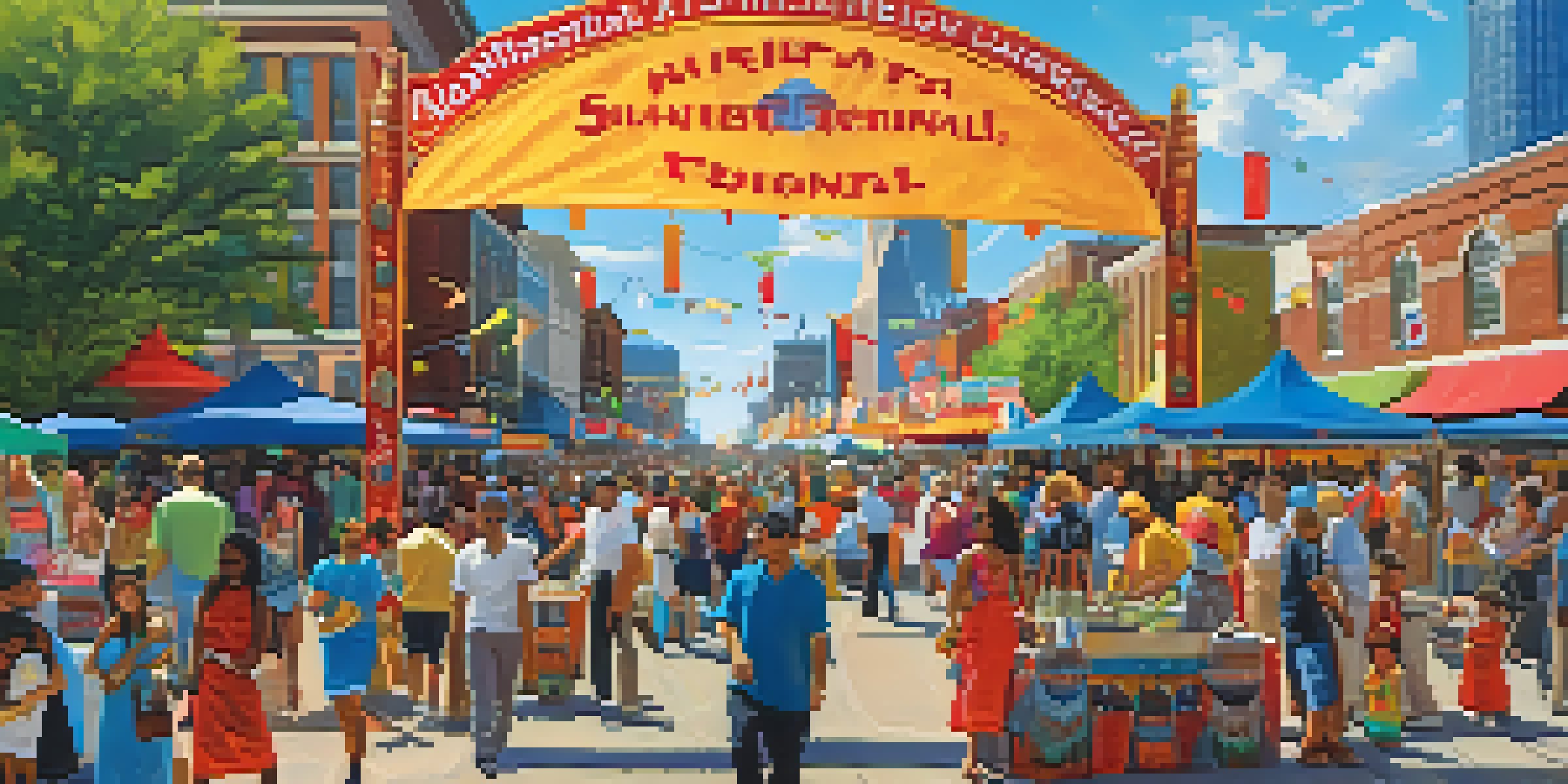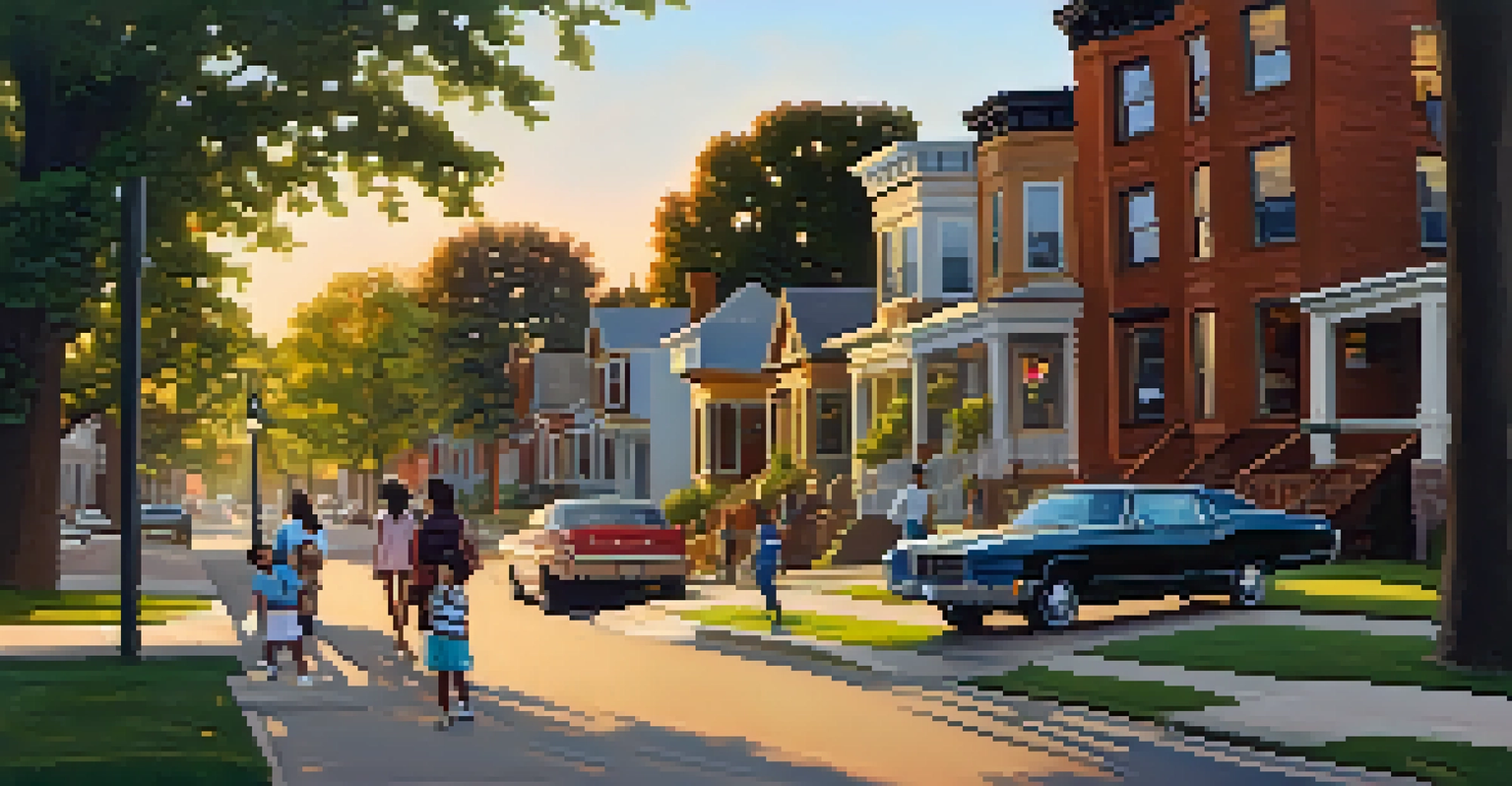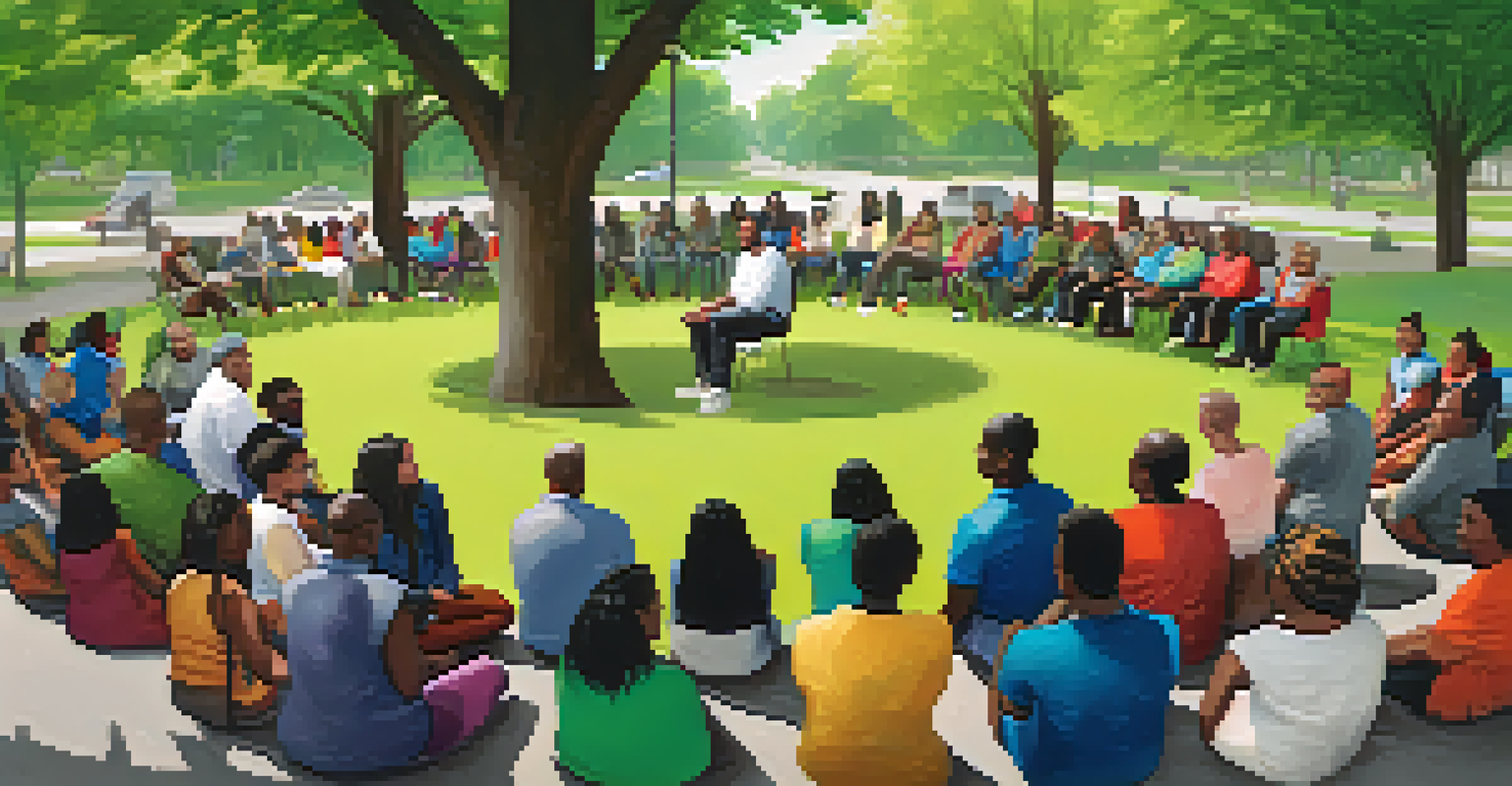Demographics of St. Louis: A Study of Its Diverse Communities

An Overview of St. Louis Demographics
St. Louis, known for its iconic Gateway Arch, is a city with a rich demographic landscape. As of the latest census, the city has a population of approximately 300,000 residents, reflecting a blend of cultures and backgrounds. This diversity is not just a number; it tells the story of a city shaped by waves of immigration and community evolution over the years.
Diversity is not a reason for division, but a foundation for unity.
The demographics of St. Louis have evolved significantly, with a notable increase in its Hispanic and Asian populations. These communities have brought their unique traditions and customs, enriching the city's cultural fabric. Additionally, the city's African American community continues to play a vital role in shaping its identity, contributing to the arts, education, and local cuisine.
Understanding St. Louis's demographics gives us insight into its social dynamics and economic landscape. The city's population is not only diverse in ethnicity but also in age, education, and socioeconomic status. This variety presents both challenges and opportunities for community development and cohesion.
Ethnic Diversity: A Closer Look
One of the most striking aspects of St. Louis's demographics is its ethnic diversity. The city is home to a wide range of ethnic groups, including African Americans, Caucasians, Hispanics, and Asians. This melting pot of cultures creates a vibrant atmosphere that can be seen in local festivals, restaurants, and community events.

African Americans make up a significant portion of the city's population, with a rich history that dates back to the 19th century. Their influence can be felt throughout the city, particularly in neighborhoods like North St. Louis, which is known for its cultural landmarks and community activism. Meanwhile, the Hispanic community has been rapidly growing, particularly in areas like South St. Louis, where you'll find authentic food markets and cultural celebrations.
St. Louis: A Cultural Melting Pot
The city's rich ethnic diversity enhances its cultural landscape through food, festivals, and community events.
In addition to these groups, there is a notable Asian population, particularly Vietnamese and Chinese communities. They contribute to the city's diversity through businesses, cultural festivals, and community organizations. This blend of ethnicities not only enhances the local culture but also fosters a sense of belonging among residents.
Economic Landscape: Diverse Opportunities
The economic landscape of St. Louis mirrors its demographic diversity, offering a mix of opportunities across various sectors. The city has historically been a hub for manufacturing and trade, but in recent years, sectors like healthcare, education, and technology have gained prominence. This shift has attracted a diverse workforce, reflecting the city's changing demographics.
The beauty of the world lies in the diversity of its people.
Many local businesses are owned by members of the city's minority communities, contributing to economic growth and job creation. For instance, the Hispanic Chamber of Commerce plays a crucial role in supporting Hispanic entrepreneurs in the area. These businesses not only provide essential services but also create a sense of community pride and cultural representation.
However, economic disparities still exist among different demographic groups in St. Louis. Addressing these gaps is essential for fostering inclusivity and ensuring that all communities benefit from the city's growth. By investing in education and workforce development, St. Louis can leverage its diversity as an asset for economic prosperity.
Education: Bridging Gaps in Communities
Education is a vital factor in shaping the future of St. Louis's diverse communities. The city's public school system serves a large number of students from various backgrounds, but it faces challenges such as funding inequities and varying levels of resources. These disparities can impact the quality of education that students receive, particularly in lower-income neighborhoods.
To address these issues, community organizations and local leaders are working tirelessly to implement programs aimed at improving educational outcomes. For example, initiatives that focus on early childhood education have proven effective in preparing children for academic success. These efforts help bridge the gap for students who may not have access to the same resources as their peers.
Economic Growth Amid Disparities
St. Louis's evolving economy offers diverse opportunities, yet economic disparities among demographic groups persist.
Moreover, schools in St. Louis are increasingly embracing multicultural education, which acknowledges and celebrates the diverse backgrounds of their students. This approach not only fosters a sense of inclusion but also prepares students to thrive in a multicultural world. Education, therefore, plays a critical role in uniting the city's diverse communities and promoting social cohesion.
Housing: Patterns and Challenges
Housing in St. Louis reflects the city's demographic diversity but also highlights significant challenges. The city has a mix of historic homes, modern apartments, and public housing, catering to different income levels. However, issues such as affordability and access to quality housing remain pressing concerns for many residents, particularly in underserved neighborhoods.
Certain areas of St. Louis, particularly those with a higher concentration of minority populations, often face housing instability. This can lead to a cycle of poverty that is hard to break, as families struggle to find safe and affordable housing. Community organizations are stepping in to advocate for improved housing policies and to provide resources for families in need.
On the other hand, revitalization efforts in neighborhoods like the Grove and Forest Park Southeast are attracting new residents and investment. These changes can bring both opportunities and challenges, as long-time residents may feel displaced by rising rents and gentrification. Balancing development with the needs of existing communities is crucial for maintaining St. Louis's rich diversity.
Cultural Influence: Celebrating Diversity
The cultural influence of St. Louis's diverse communities is palpable throughout the city. From music and art to food and festivals, the myriad of cultural expressions reflects the rich tapestry of its residents. Events like the St. Louis Art Fair and the Festival of Nations showcase the city's multicultural vibrancy, drawing both locals and visitors alike.
Food is another significant aspect of St. Louis's cultural diversity. The city boasts a plethora of international cuisines, from soul food and barbecue to Vietnamese pho and Italian pasta. Exploring these culinary offerings not only satisfies the palate but also provides a delicious window into the city's diverse communities and their traditions.
Education as a Community Catalyst
Education initiatives aim to bridge gaps in resources and promote inclusivity in St. Louis's diverse communities.
Moreover, local artists and musicians from various backgrounds contribute to the city's cultural scene, infusing it with new styles and perspectives. This creative energy fosters a sense of unity and pride among residents, as they celebrate their shared heritage while embracing new influences. The cultural landscape of St. Louis is a testament to its diverse communities and their enduring impact.
Community Engagement: Building Bridges
Community engagement plays a pivotal role in fostering connections among St. Louis's diverse populations. Various organizations and initiatives work tirelessly to bring residents together, encouraging dialogue and collaboration across cultural lines. Programs that promote volunteerism and civic participation help strengthen the sense of community and shared purpose.
One notable example is the St. Louis Community Foundation, which supports grassroots initiatives aimed at addressing local issues. These programs often focus on empowering marginalized communities, ensuring that their voices are heard in decision-making processes. By promoting inclusivity, the foundation helps build bridges between different demographic groups.

Additionally, local events such as community forums and town hall meetings provide platforms for residents to share their experiences and perspectives. These gatherings foster understanding and empathy, allowing residents to learn from one another and work toward common goals. Ultimately, community engagement is essential for nurturing a cohesive and vibrant St. Louis.